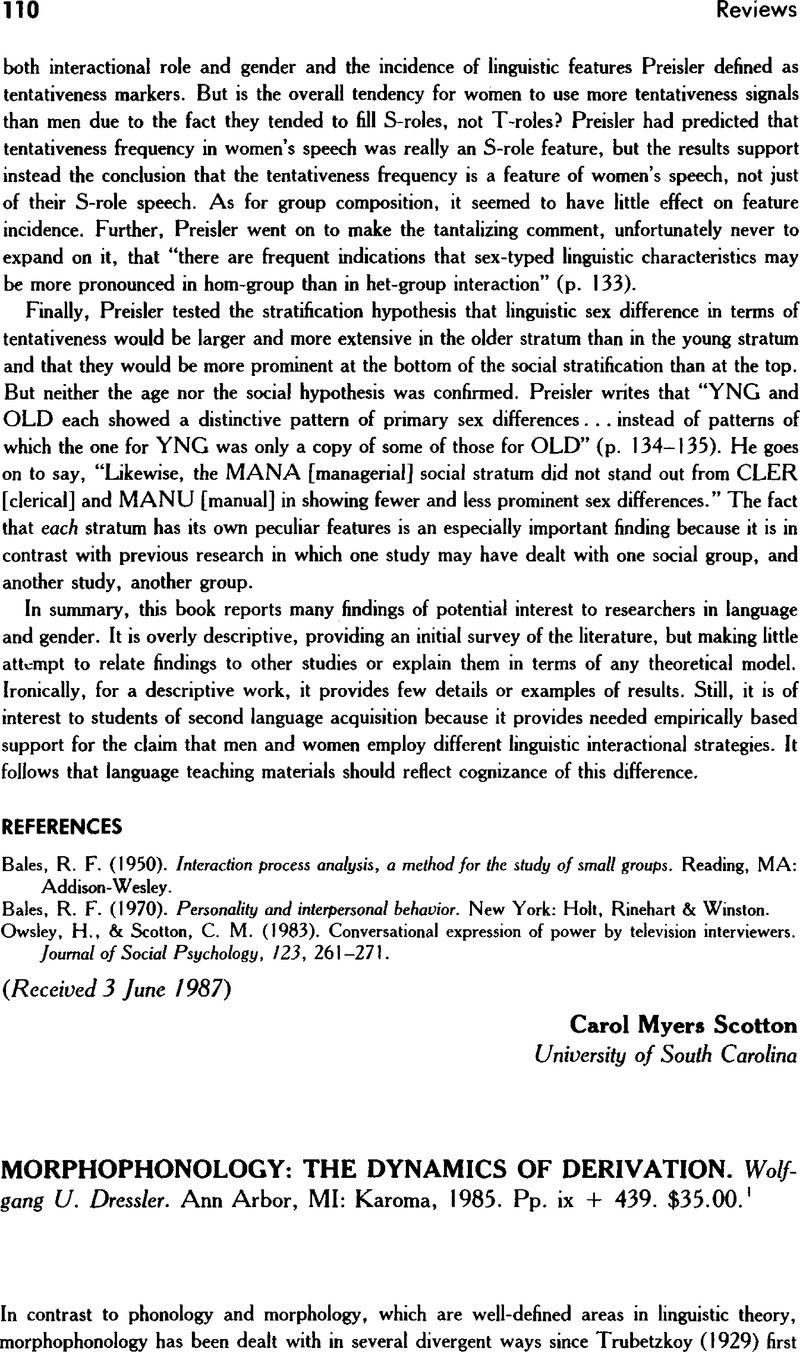No CrossRef data available.
Article contents
MORPHOPHONOLOGY: THE DYNAMICS OF DERIVATION. Wolfgang U. Dressler. Ann Arbor, MI: Karoma, 1985. Pp. ix + 439. $35.00.
Published online by Cambridge University Press: 07 November 2008
Abstract
An abstract is not available for this content so a preview has been provided. Please use the Get access link above for information on how to access this content.

- Type
- Reviews
- Information
- Copyright
- Copyright © Cambridge University Press 1988
References
REFERENCES
Dressler, W., Mayerthaler, W., Panagl, O., & Wurzel, W. (forthcoming). Leitmotifs in natural morphology. Amsterdam: Benjamins.CrossRefGoogle Scholar
Ford, A., & Singh, R. (1983). On the status of morphophonology. In Richardson, J. F., Marks, M., & Chukerman, A. (Eds.), Parasession on the interplay of phonology, morphology and syntax (pp. 63–78). Chicago: Chicago Linguistic Society.Google Scholar
Kurylowicz, J. (1968). The notion of morpho(pho)neme. In Lehmann, W., & Malkiel, Y. (Eds.), Directions for historical linguistics, (pp. 65–81). Austin: University of Texas Press.Google Scholar
MacWhinney, B. (1978). The acquisition of morphophonology. Chicago: University of Chicago Press.CrossRefGoogle Scholar
Myerson, R. (1976). A study of children's knowledge of certain word formation rules and the relationship of this knowledge to various forms of reading achievement. Unpublished doctoral dissertation, Harvard University, Cambridge, MA.Google Scholar
Sapir, E. (1963). The psychological reality of phonemes. In Mandelbaum, D. G. (Ed.), Selected writings of Edward Sapir (pp. 46–60). Berkeley: University of California Press.Google Scholar
Shapiro, M. (1983). The sense of grammar. Language as semiotic. Bloomington: Indiana University Press.Google Scholar
Trubetzkoy, N. (1929). Sur la morphonologie. Travaux du Cercle Linguistique de Prague, 1, 85–88.Google Scholar


